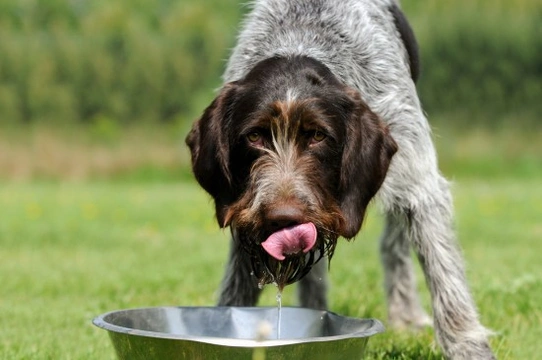
Providing water for your dog
Dog owners are often concerned that their dog is either drinking too much water or not enough, and how to best ensure that they meet their dog’s needs for water provision.
Dogs should have access to fresh, clean water at all times, and their bowls should be topped up regularly throughout the day. Bowls should also be washed and refilled daily, in order to keep your dog happy, healthy and hydrated.
Dogs can be very overindulgent when it comes to food and will often eat way beyond the point of fullness, and so it falls to us as dog owners to restrict and provide for our dog’s nutritional needs, by means of set mealtimes and proper portion control. However, dogs will not overindulge in water, and will only drink what they need; this can of course vary considerably at different times of the year, and depending on how hot or how active your dog is.
While water is often not something that we give much thought to where dogs are concerned, providing that everything seems well, it is worth recapping now and then some of the reasons why water is so important for dogs, what it does, and how to make sure that everything is running smoothly. Read on to learn more.
The need for hydration
First and foremost, water is essential to maintain hydration, or the appropriate level of water within the body. Like all of earth’s creatures, dogs are made up of more water than anything else, and a lack of water will soon make your dog feel ill. Ensuring sufficient water means that your dog will stay hydrated, their circulatory system will tick over as normal, and they will be able to digest their food and maintain their metabolism. Regular or prolonged dehydration can lead to heat stroke, kidney and liver damage, and even heart problems in the dog. Always let your dog drink as much as they want to, when they want to.
Water to cool down
Water is also important to maintain body temperature, particularly in hot weather. The dog’s two main methods of staying cool are by panting, which also dries out the mouth, and by drinking water to maintain hydration levels and bring their core temperature down. Particularly during the summer months, your dog may drink much more water than normal as an attempt to stay cool, and as the water within their bodies will be processed and evaporated faster than in the winter.
Water and urination
What goes in must come out, although your dog will not produce an equal amount of urine to the amount of water that they drink. It is important to set and keep to a regular schedule of allowing your dog out at certain times to go to the toilet, and when you have a young puppy who is still getting to grips with toilet training, to take them outside at every possible opportunity after they have eaten or drunk.
Puppies do not have as good bladder control as adult dogs, and will often need to pee shortly after drinking a reasonable amount of water, something that you need to allow for until your dog gets older.
When you might need to restrict water intake
There are few situations in which you should not provide free access to water all of the time, and you should never remove access to water without talking to your vet.
However, if your dog is due to have a surgery, your vet may tell you to remove their access to water from a certain amount of time prior to the operation. Dogs that are vomiting profusely or are on a nil per mouth care regime may also be unable to have water, but in both of these situations it is highly likely that your dog will be an inpatient at the veterinary clinic at the time.
Some tips on water and water intake for dogs
- Ensure that your dog’s water bowls are kept clean and washed, and are not harbouring germs and bacteria. Wash them in hot, soapy water every day.
- If your dog’s water bowl has become cracked, chipped or badly chewed, replace it as this type of damage can harbour bacteria.
- Steel bowls are the best for water, as they cannot be scratched or damaged easily, but may be easier to knock over. Ceramic bowls are fine as long as they are chip-free, and take care to replace plastic bowls once they become very scratched.
- Try to ensure that your dog has at least two different water bowls in different locations, in case one gets knocked over.
- Refill your dog’s water bowl at around the same time each day, so that you will be more observant of changes such as excessive water intake or not drinking enough.
- Talk to your vet if you have any concerns about your dog’s water intake or general health.



